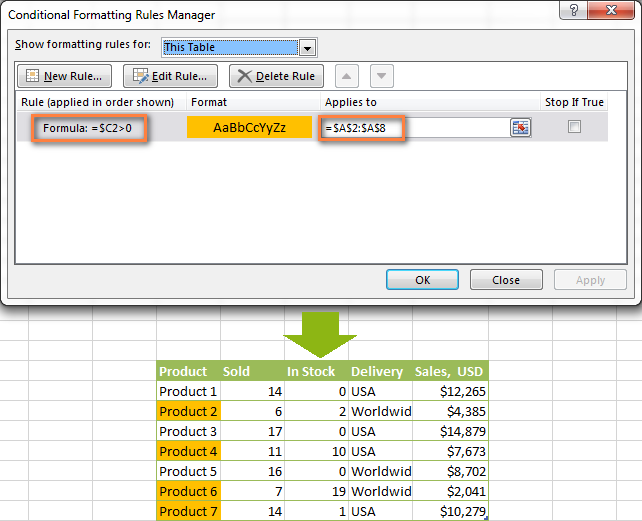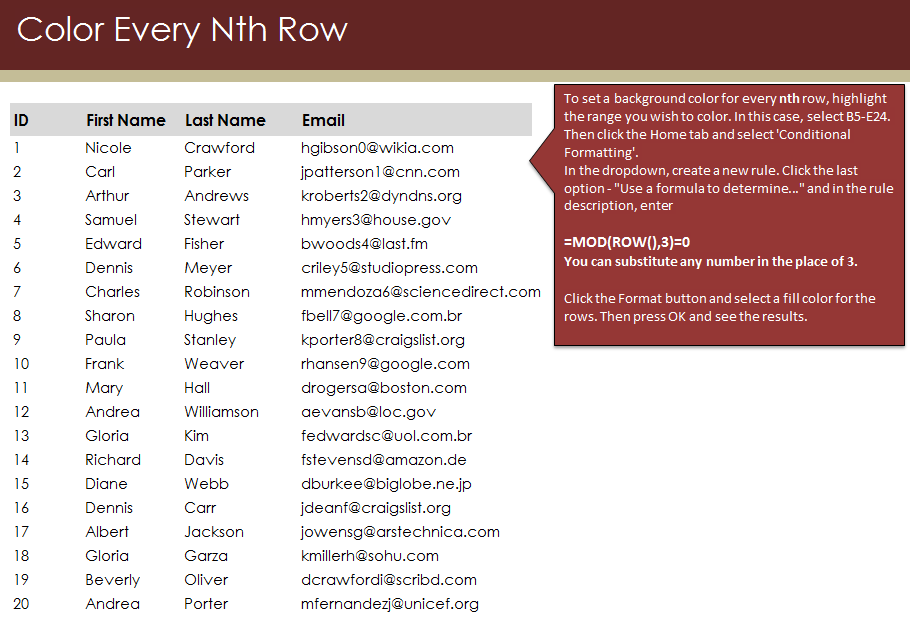

If you don’t want your cells to turn green when it includes the text “L compatible” (or something else), you can have it turn yellow instead.Īs you see there’re enough options, but wait – there’s more!Īll of the above is very nice, but if you accidentally selected the wrong area when you made the conditional formatting rule – then it doesn’t help to change the ‘Rule Type’ or whether the cells should be red or blue.Īnd if you spent 5 minutes entering a unique formula to “trigger” the formatting, then it sucks to delete it and do it all over.
:max_bytes(150000):strip_icc()/FormatFormula-5be1f525c9e77c0051e881b7.jpg)
From this little (familiar) box you can change the formatting that you applied in the first place.If you keep the ‘Specific text’ you can decide here whether the cell should contain, not contain, begin with or end with the text that you enter in the field to the right.This means that the formatting applies when a cell is empty or, for example, holds a value greater than, or less than, 100.

Here you edit your rule so it no longer “triggers” on a cell containing specific text, by choosing “Blanks” or “Cell Value”.


 0 kommentar(er)
0 kommentar(er)
